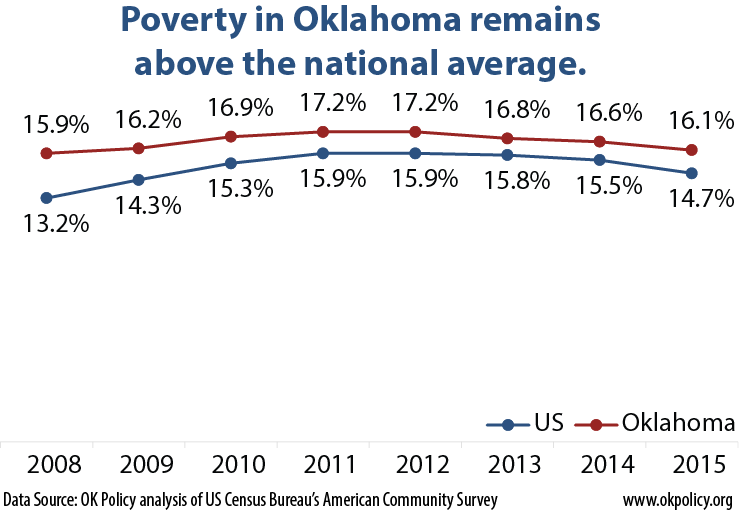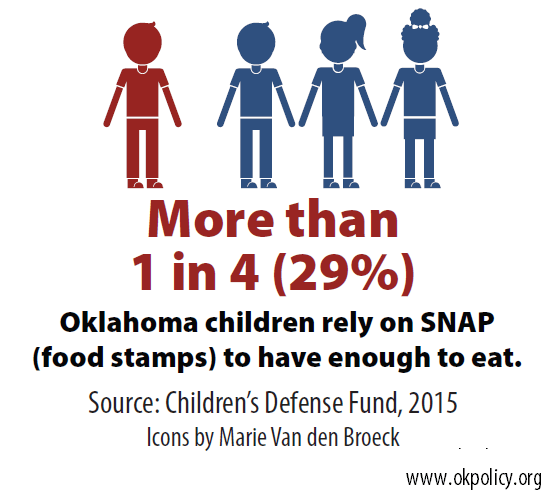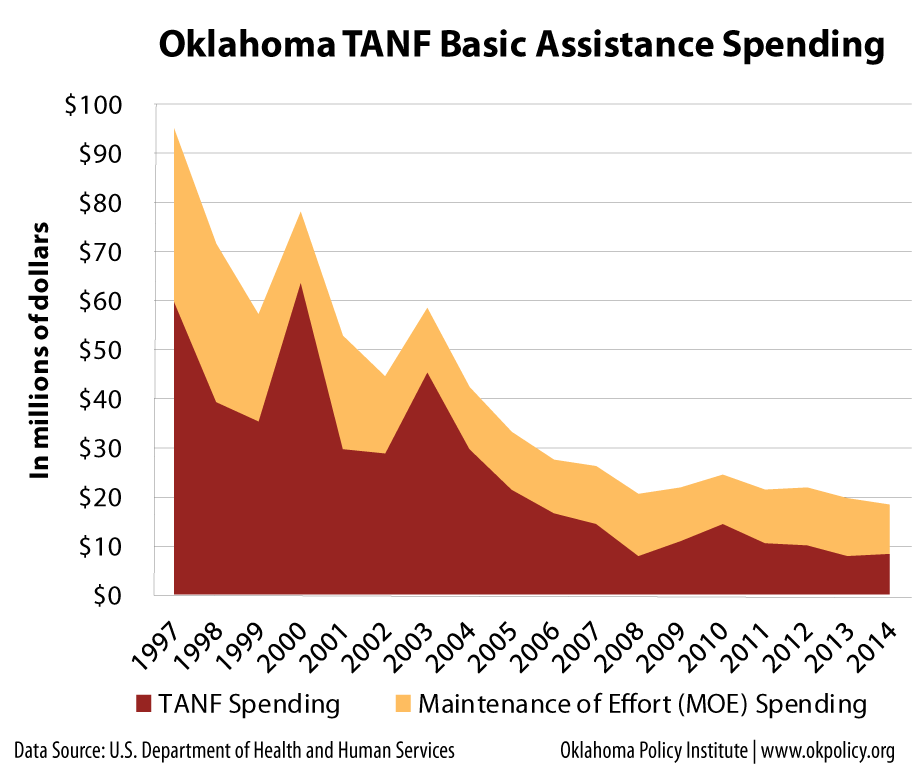 Most Oklahomans agree that government has an essential role in ensuring that vulnerable individuals and families can meet their basic needs when times are toughest. These basic supports are often called “human services.” They are the safety net that makes sure everyone has a foundation to reach their potential and fully contribute to the community. The benefits go far beyond those individuals receiving help — when we maximize the potential of our fellow Oklahomans, we help entire communities to thrive and remain vibrant. Here are eight things you should know about how Oklahoma pays for and operates these core programs:
Most Oklahomans agree that government has an essential role in ensuring that vulnerable individuals and families can meet their basic needs when times are toughest. These basic supports are often called “human services.” They are the safety net that makes sure everyone has a foundation to reach their potential and fully contribute to the community. The benefits go far beyond those individuals receiving help — when we maximize the potential of our fellow Oklahomans, we help entire communities to thrive and remain vibrant. Here are eight things you should know about how Oklahoma pays for and operates these core programs:
#1: Human services matter at many stages in people’s lives.
In childhood, human services support people by making sure kids have enough food to eat and basic health care to support their growing brains and bodies. In adulthood, human services support people by doing things like working to make housing safe and affordable or teaching literacy to adults who cannot read. Human services support older adults by doing things like reducing social isolation and providing meals to older people who can’t leave their homes.
#2: Poverty in Oklahoma remains above the national average

610,828 Oklahomans had incomes below the poverty level in 2015. That’s 16.1 percent of Oklahoma’s population, or about one out of every six Oklahomans. While the measure has its flaws, federal poverty rates are useful as an estimate of the number of Oklahomans who are struggling in the private economy.
#3: Poverty has many faces in Oklahoma

Although the highest poverty rates are found among African-American (27.8%), Hispanic or Latino (24.6%), and American Indian (23.1%) Oklahomans, about three-fifths of all Oklahomans living in poverty in Oklahoma are white. Poverty affects many different family types as well. One in three of the families living in poverty are in single-mother households, but one in four are in married couple households. Poverty levels are highest among women, children, people with less education, people with disabilities, and people outside Oklahoma’s major metro areas.
#4: The Oklahoma Department of Human Services (OKDHS) is Oklahoma’s biggest agency providing basic housing, nutrition, and child welfare programs
The Oklahoma Department of Human Services (OKDHS) received appropriations of $652 million in FY 2017. Appropriations grew 20 percent since FY 2011, while the total state budget was approximately $6.8 billion in both years. Most of the increased funding has been for child welfare services under the Pinnacle Plan (discussed in fact #8). Most other divisions of OKDHS have been cut. The agency also receives approximately $1.5 billion in federal grants and other revenue. DHS has the most employees of any state agency, employing over 7,300 people in FY 2015, although the agency has been forced to reduce its workforce significantly due to recent budget cuts.
#5: The Supplemental Nutrition Assistance Program (SNAP) is Oklahoma’s first line of defense against hunger

SNAP is a federally-funded program operated by Oklahoma DHS. SNAP delivers more nutrition assistance to low-income children and families than any other public or charitable effort by far. In Oklahoma, SNAP helped about 262,300 children in fiscal year 2014, more than 1 in 4 (27 percent) of our state’s kids. Currently in Oklahoma, just over 600,000 people receive SNAP benefits each month and close to 900,000 receive assistance at some point during the year. This program cost $860 million in FY 2015 and is fully funded by the federal government. SNAP accounts for 64 percent of all food assistance in Oklahoma. By comparison, all private charitable efforts combined account for just 6 percent.
#6: SNAP is widely seen as an effective, well-targeted program
SNAP’s benefits are modest, but they’re well-targeted to the families that need them the most. While participating families with children in Oklahoma received an average of $410 each month in 2014, those with incomes below 50 percent of the poverty line ($9,895 per year for a family of 3) got $516. That’s one reason why SNAP helps lift more children out of deep poverty than any other government assistance program. Among SNAP households with at least one working-age, able-bodied adult, more than half work – and more than 80 percent work in the year prior to or the year after receiving SNAP. The rates are even higher for families with children.
#7: A tiny percentage of poor families receive cash assistance from the state

Temporary Assistance for Needy Families (TANF), a federal block grant, helps fund job training, work supports, and, in some instances, short-term cash payments for low-income single parents. About 12,000 families receive cash assistance through TANF, representing less than one percent of the population. This program is much smaller than food stamps, with annual spending of just under $200 million in FY 2014. Less than 10 percent of total spending goes to basic cash assistance. Oklahoma is one of just 10 states that spends less than 10 percent of TANF funding on basic cash assistance.
#8: Besides SNAP and TANF, OKDHS operates numerous other important programs
OKDHS is responsible for the state’s child welfare system that serves the more than 10,000 children who have been placed in state custody. The child welfare system has undergone major changes and funding increases in recent years to meet the terms of a class-action lawsuit that found Oklahoma was not protecting children in its care.
OKDHS also provides services like medical care and other assistance for those with developmental disabilities; provides transportation, meals, and care for seniors who can live at home; subsidizes child care for eligible working families; and collects child support from absent parents of children who are eligible for DHS services.






